Sequalitchew Creek Trail
DuPont is full of trails but the star attraction must be the Sequalitchew Creek trail as it drops from the uplands of the town down a ravine to the secluded waters of Puget Sound. This trail has only been official for a few years but it has an extraordinary amount of history to it. Just the beach here alone makes it one of the most historic places in Washington. See the history below! The paved trail leaves City Hall following a wide path through some new trees. It quickly starts to drop into the densely forested ravine and the creek appears below. The trail turn to good gravel but doesn't drop too steeply, this was a rail line hauling explosives! As you reach the bottom, you find The Estuary with some interpretive signs. Also notice the old powerpoles hiding along the trail nearby. Two tunnels go through the railroad dike, one with the tracks still intact. Kids will love coming out the other side to find Puget Sound, especially if you don't tell them that this is the destination. Follow the trail above the beach for a minute to the largest open beach for playing. The tracks are also there that go out to what was once the DuPont Wharf, 36 feet wide and 300 feet long. It was the receiving and shipping point for raw materials and finished explosives. At low tide remnants of the Wharf's pilings are all that remain today. Views are out to Anderson Island, McNeil Island, and the Olympics.
For a large loop hike (5 miles total), and a bit more history, return via three more DuPont Trails. Follow the Wilkes Observatory Trail, the McNeil Street Trail, and the Yehle Village/Palisades Village Connector Trail. The turnoff is just before The Estuary, on the left.
WillhiteWeb.com - Puget Sound Hiking Trails
Access
Take the Center Drive Exit off I-5 and follow Center Drive to Civic Lane. Turn left and park in front of City Hall. Walk up to the building looking for the trailhead interpretive signs at the woods edge.
1.5 miles down, 210 feet drop
History
This is where Native Americans existed for at least 5700 years. The Sequalitchew Creek area provided food and home for the Sequalitchew-Nisqually Indians who lived in a year-round village near the mouth of the creek. During the summer months the village was extended onto the beach. The arrival of the Hudson Bay Company in 1832 on the Creek brought British influence to the Puget Sound region. The company built Fort Nisqually, a fur trading and agricultural settlement, just south of the Creek. The fort was later purchased by the U.S. Government in 1869. In 1906 the DuPont Company purchased 2,700 acres of land and 1,485 feet of waterfront property for the manufacture of black powder and high explosives. The Creek provided hydroelectric power to the plant and village. A narrow-gauge railway ran on the north side of the Creek to transport finished explosives down to the wharf and import raw materials back to the plant. The property was sold to Weyerhaeuser in 1976. Today The Home Course golf course sits on the land where the DuPont Company plant made explosives.
The Estuary
Just above Puget Sound a broad, shallow basin slows and widens the Creek. This basin shelters a small saltwater marsh. During low-flow periods, this area is mostly dry and stagnant, showing wide channels of bluish, algae-coated Creek bed. In the spring, the basin is thick with tall salt-tolerant grasses, including tufted hairgrass, bent grass, fat hen, western dock and Lyngbye's sedge. The higher areas are populated with Douglas aster, yarrow and marsh cinquefoil. The flow of the Creek forms small channels through the salt marsh, bound for the culvert through which it flows to Puget Sound. This half-acre salt marsh is all that is left where Sequalitchew creek once met Puget Sound as a rich tidal cove.
The Sequalitchew Canyon Line
Explosives giant E.I. DuPont de Nemours built the 36-inch wide narrow gauge train line to transport products between its plant and wharf. Operational by September 1909, the line was initially powered by teams of horses. Shortly after a disastrous accident occured that took the lives of two brakeman, the DuPont Company purchased the first locomotive equipped with an air brake system. The weight of the train's cars loaded with 58,320 pounds of explosives totaled 51 tones, which had to be eased down the long grade by the little Plymouth engine. The chance that a runaway train might make it out onto the wharf was remote due to the sharp curve just beyond the tunnel under the Burlington Northern dike. However an additional preventive measure in the form of a derail track ran up the hillside near the bottom of the grade. From the wharf at sea level to the bluff overlooking Nisqually Reach the 1.30 mile climb could be classified as "mountain railroad" due to its steep average grade of 2.91%.
Sequalitchew Band of the Nisqually Tribe
The Sequalitchew people took their name from the creek where they lived which means "place of long run out tide." Subsistence for the people included seasonal rounds of fishing, hunting and gathering of both shellfish and wild plants for food and medicinal purposes. The permanent village of five or six extended families of 50 to 100 members lived in two long houses dwellings on a terrace above the creek waters. When visiting relatives increased the tribe's numbers, temporary shelters were placed on the beach. The Bay Men married local native women who provided interpretive skills and strong familial ties. A new cross-cultural society developed and today many Nisqually can trace their family lines back to the men at the Fort.
"There has long been a tie that binds the people of the Nisqually Indian Tribe to this land where Fort Nisqually once stood. Our oldest known village site here has been estimated as being over 5000 years old. Our most recent village located at the mouth of the Sequalitchew Creek was occupied until 1855-1856 when our people were required to move onto the reservation. Through many centuries this land has been park of the traditional lands of the Nisqually. Our people once hunted, fished and gathered shellfish here. We gathered acorns from the oak trees, picked berries from the woodlands and dug camas on the vast expanse of adjacent prairielands." Cecelia Svinth Carpenter (1924-2010) Nisqually Tribal Historian & Author
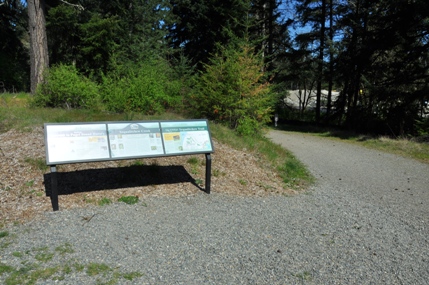
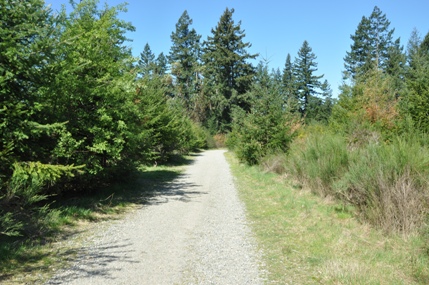
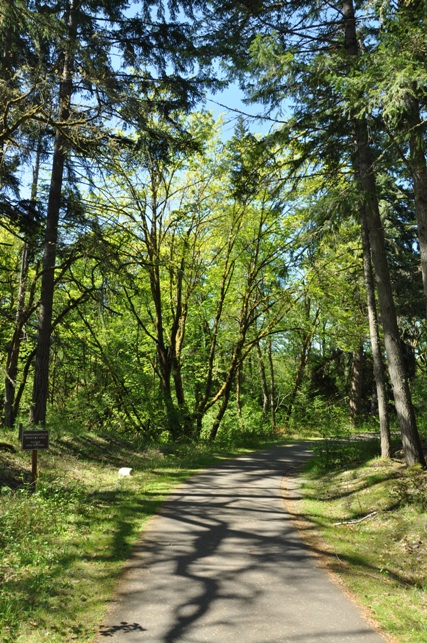
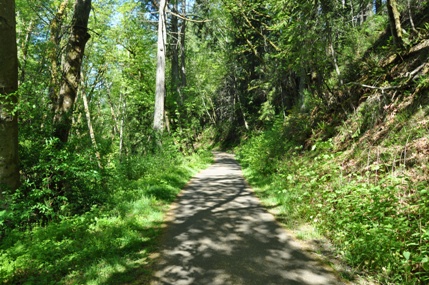
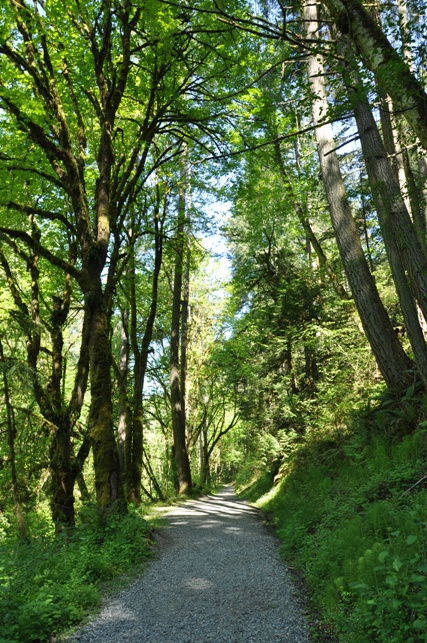
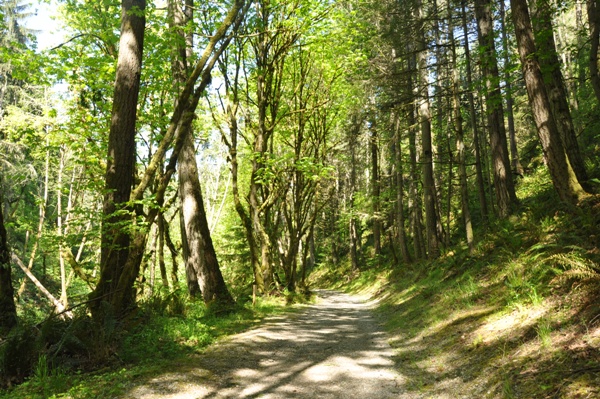
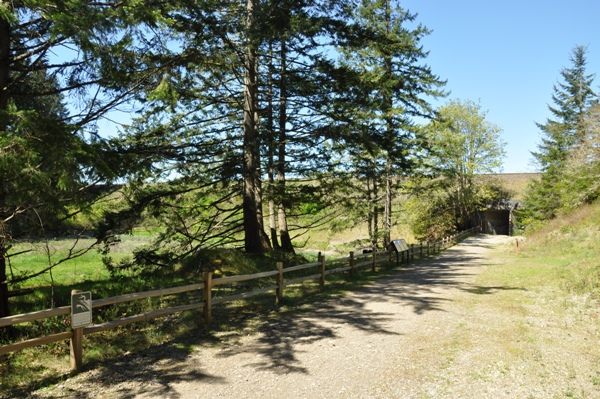
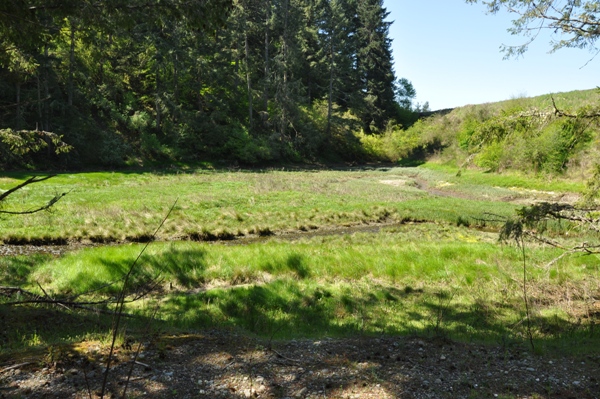
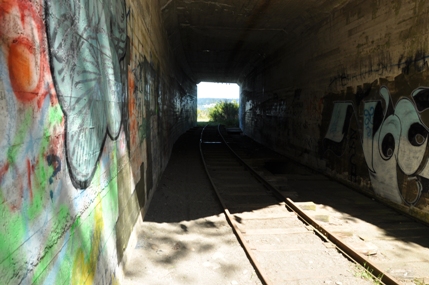
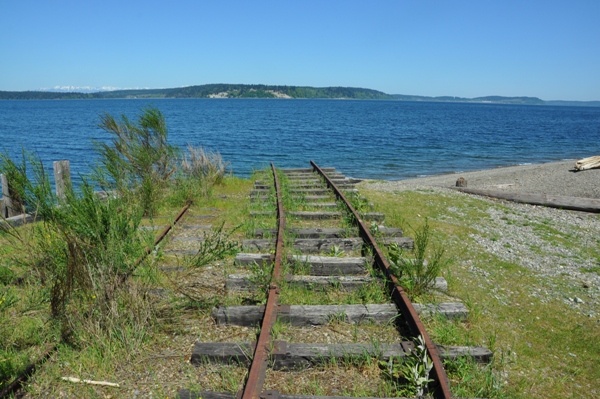
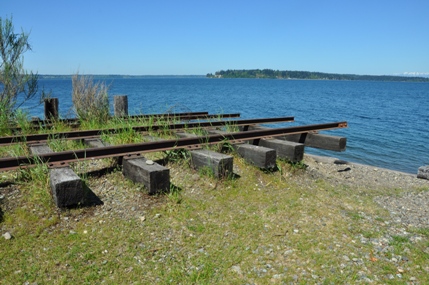
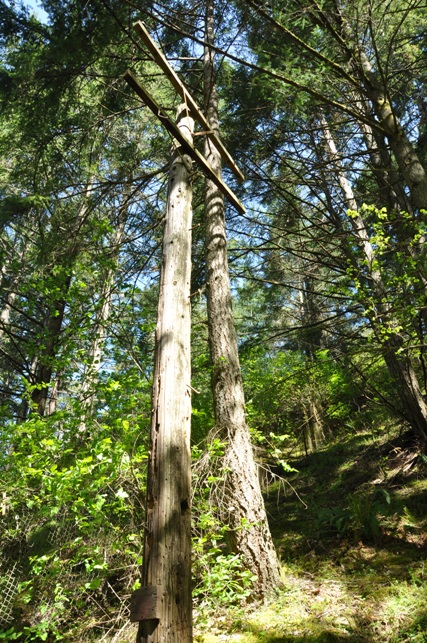

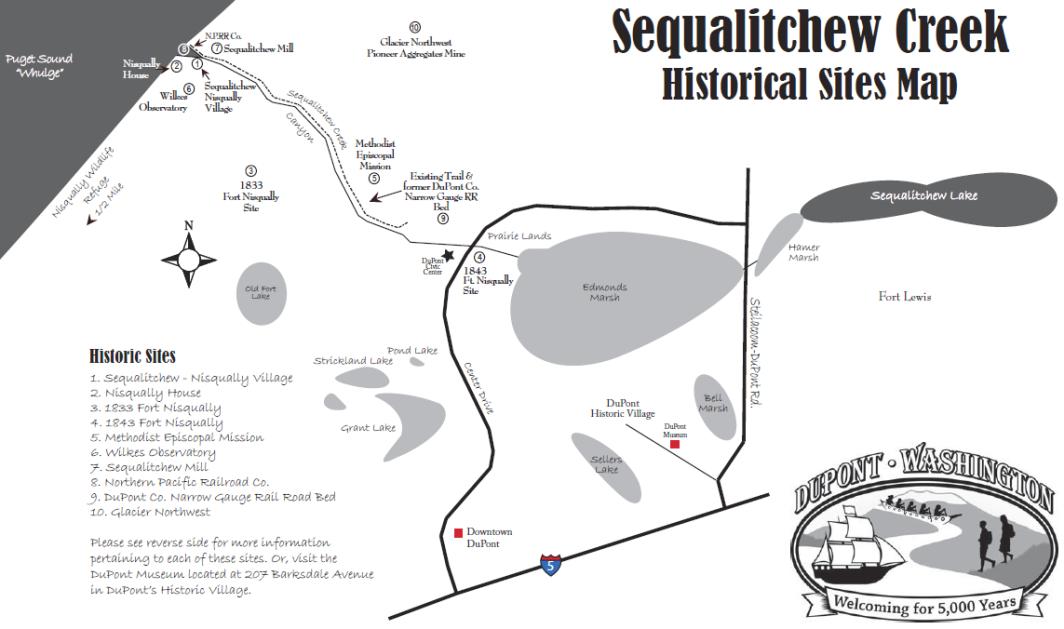
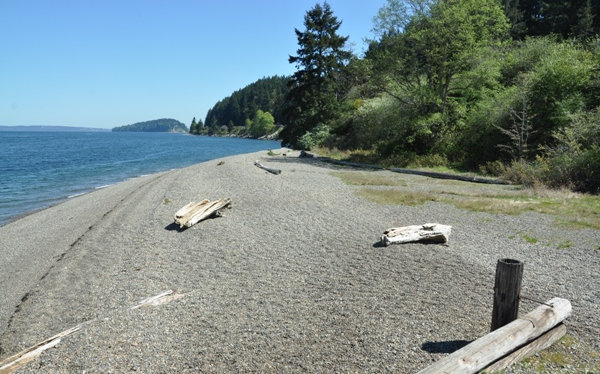
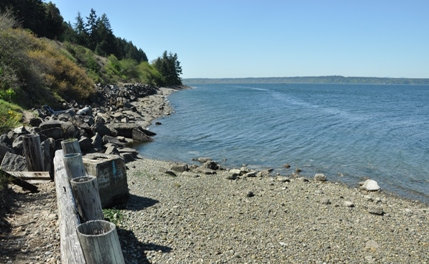
Trailhead next to City Hall
Trail before it drops down into the canyon
Tunnel with the tracks
Burlington Northern dike with the tunnel
The Estuary
Old power pole
Line ending at the missing wharf















